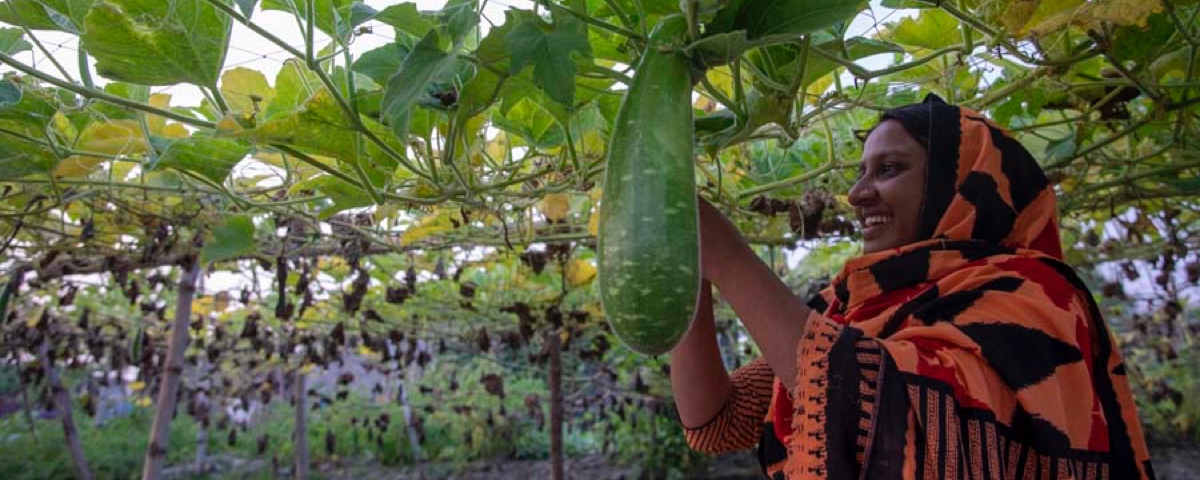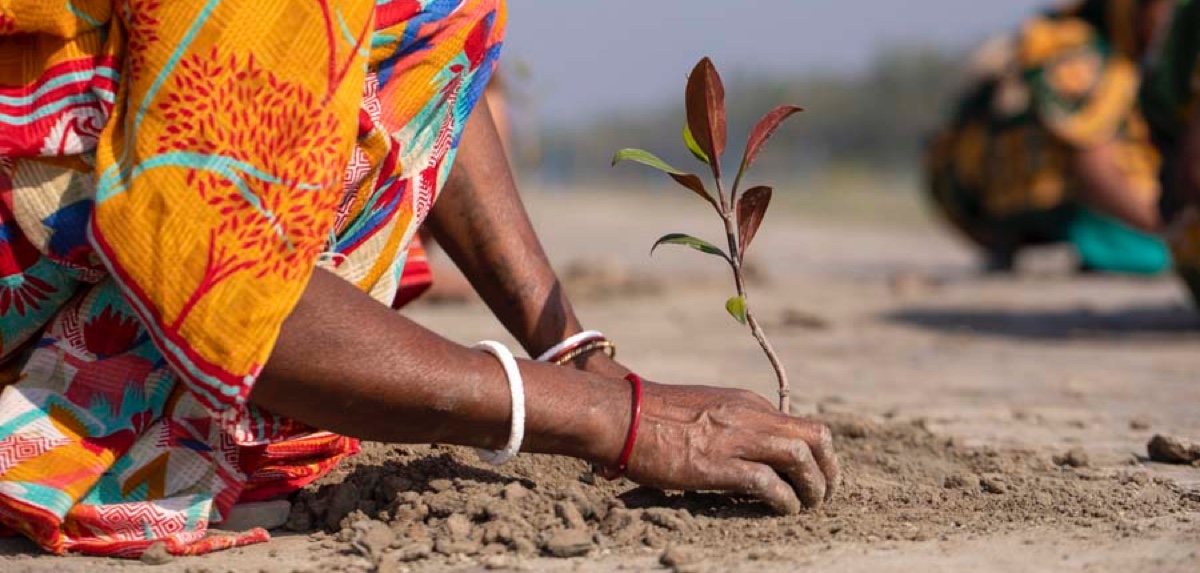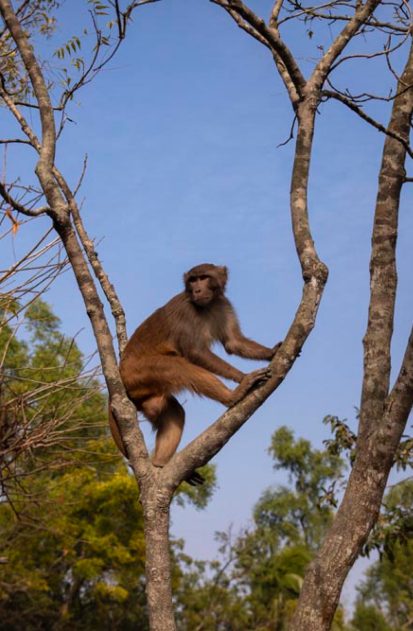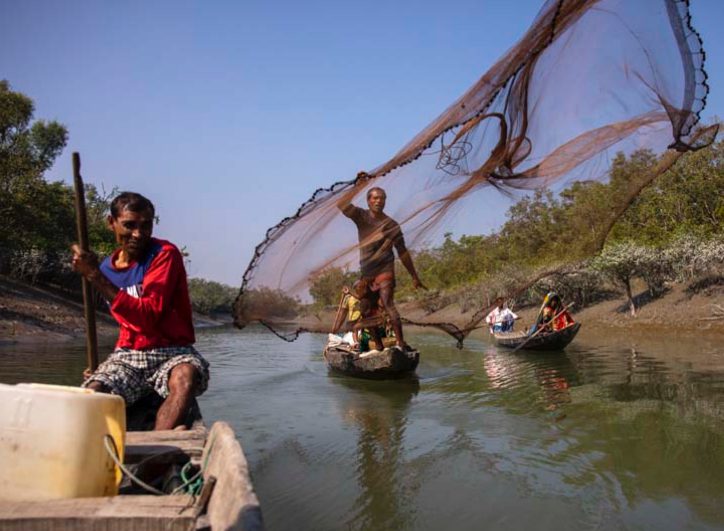A local approach
to a global problem
Blue Mangrove Fund aims at creating a long-lasting,
sustainable solution to improve the life of local communities
while restoring one of nature’s most endangered ecosystems
and capturing large volumes of CO2.

A holistic solution
The goal is simple yet giant: rebuilding a full new ecosystem and a sustainable socio-economic structure for populations to grow and blossom on. This is not an easy matter as population density nearby is very high and in demand for more land.
This idea is not brand new. Massive reforestation programs are more and more common, however many of them fail as a result of two causes: planting the wrong species into the wrong location (there are about 110 species of mangrove trees), and a disregard to the socio-economic factors explaining the decline of mangrove forests in the first place.
We have learned from these mistakes. Our careful approach allows us to learn from nature while collaborating closely with local communities and proposing livelihoods alternatives to deforestation. Our project does not just stop at creating a plantation. We aim at building a viable, long term and fully interconnected ecosystem where nature and population can make one again.

Our key answer
The Mangrove

Though much smaller and less known than their tropical relatives, mangroves capture and hold on carbon at a faster rate and we only begin to appreciate how efficient they really are.
Human activities releases carbon dioxide in the atmosphere, which has notorious negative impacts on the climate. One of our biggest allies against these emissions are coastal environments and oceans, which provide a natural way of reducing the impact of greenhouse gases on our atmosphere through sequestration of this carbon.
The majority of the carbon captured by mangroves is stored underground, where it can remain for thousands of years.
Restoring and protecting healthy coastal environments can therefore help tackle climate change in a very effective way. But the benefits do not stop just there: coastal environments offer protection against storms and cyclones as well as recreational and ecosystem opportunities. Mangroves are also birth grounds to a large majority of tropical marine life, and these nurseries can serve as artisanal fisheries, providing local populations with a solid source of income and food.
Discover the forests
Our plantations are located in the area of a UNESCO World Heritage: the Sundarbans mangrove forest, lying on the delta of the Ganges, Brahmaputra and Meghna rivers on the bay of Bengal. These are the sites where we will plant mangroves. Once in place, these plantations will fall under the protection guidelines set for the Sundarbans area.
The forest provides a shelter against tidal surges, cyclones, storms, sea water seepage, and provides livelihood to people living in the surrounding villages.


A motivated local team for local long term consensus.
The biggest risk in plantation projects is always the precariousness of young seedlings.
The full potential of a mangrove plantation comes after 20 years of growth. The challenge of the fund is to protect the plantations on the long term: 5 years of close supervision and at least another 15 years largely handed over to the local communities and competent authorities. For this to succeed, all stakeholders must work hand in hand.
Donors willing to offset their carbon footprint must be able to continue to follow the project and the local populations must benefit more from the plantation than from deforestation or bare land use. It requires local consensus, protection from cattle, active maintenance, ensuring proper access to the river, careful use of the resources generated by the new plantations, education, local authorities back-up, etc.
